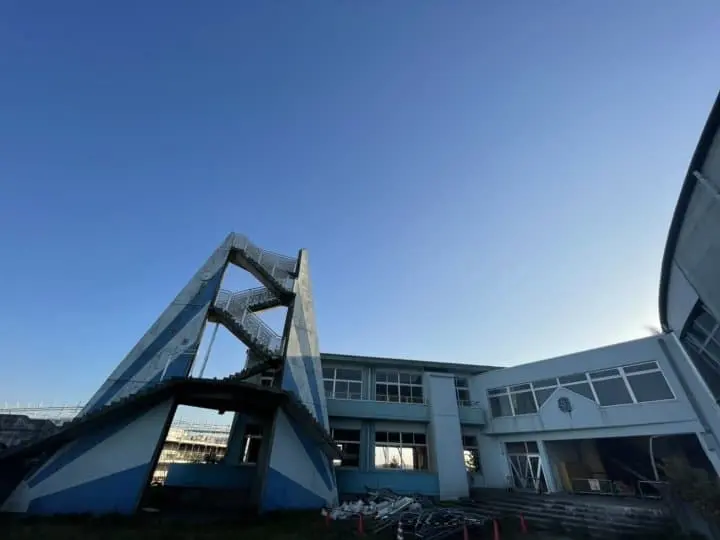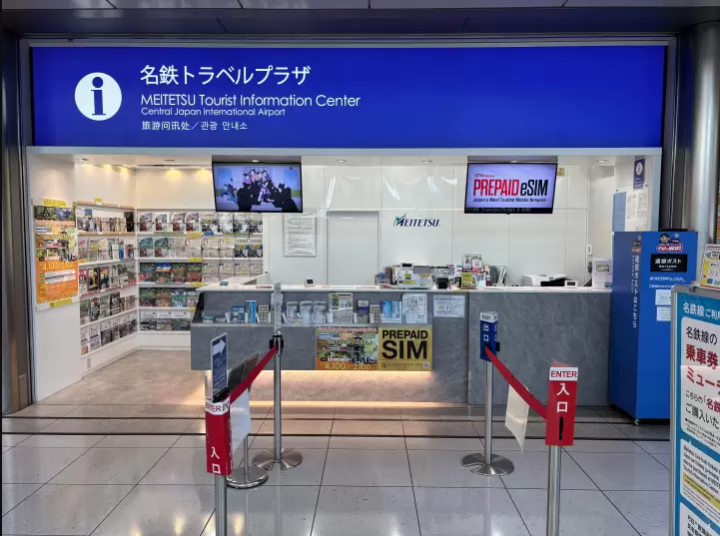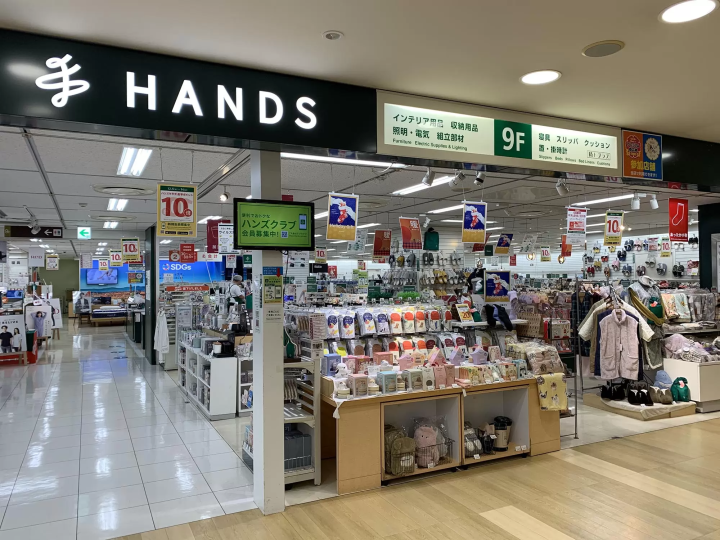Pop Up Fukushima: Taiwanese Residents Support Local Rebuilding Efforts

The tenth anniversary of the Great East Japan Earthquake is on March 11, 2021. What is the situation in Fukushima? At the end of 2020, five Taiwanese visitors embarked on a trip there. This article shares what they saw and experienced during their visit.
What is Pop Up Fukushima?
Pop Up Fukushima (please click on the website's blue translation button) is a group of Taiwanese residents in Japan who have embarked on an important mission.
They've been sending out information about Fukushima and its citizens, who have spent a decade struggling to rebuild their lives after the Great East Japan Earthquake in March 2011.
In addition, they've focused on sharing Fukushima's present situation and the region's attractive features and destinations.
Their goal is to foster a multi-faceted international exchange between Taiwanese people and Fukushima residents, and to increase the number of people involved in mutual cooperation between Taiwan and Japan.
In November of 2020, five Taiwanese residents visited Fukushima for a week-long tour and interacted with locals. What they experienced in present-day Fukushima is featured in today's article!
Facebook Page:
Pop Up Fukushima (Japanese)
The Five Taiwanese Members Who Visited Fukushima

Picture courtesy of Pop Up Fukushima
After their visit to Fukushima, how have the five members' impressions of Fukushima changed?
In addition to their opinions on Fukushima's current situation, we'll share some of their favorite sightseeing spots.
1. Ting Chung Wu / Nickname: Dawei

Picture courtesy of Pop Up Fukushima
Pop Up Fukushima's team leader is Ting Chung Wu (Dawei). This is his seventh year in Japan, and he is currently self-employed.
As a long term resident of Japan, Dawei was familiar with the situation in Fukushima. However, he didn't have any definite impression of the region, and couldn't think of a specific place that he wanted to visit in the area.
After his seven day visit to Fukushima, he said "If you see the word Fukushima and simply equate it with the nuclear power plant disaster, that would be very unfortunate."
He was impressed by Fukushima's many sightseeing destinations and the diverse range of unique characteristics and culture. He was able to feel the assortment of different lives being lived out by local residents.
Dawei continued, "After hearing the stories of the people who chose to remain in Fukushima, I realized that they've all had their share of hardships and painful experiences during these ten long years."
Even so, they spoke to Dawei about their hopes for the future with smiles on their faces.
"I would like even more people to know about Fukushima. With that in mind, I hope people will decide for themselves where they might like to visit in Fukushima."

Photo by Pixta
Dawei's favorite place in Fukushima Prefecture is Abukuma Cave in Tamura.
This area was formerly a rock quarry. Then, during an excavation in 1969, the Abukuma natural limestone cave was discovered! It's been said that the inside of this limestone cave, which feels like it was scooped out by the hand of God, was formed over the course of some 80 million years.
The inside of the cave extends for 600 meters, and many of the stalactite varieties appear to be particular to Asia.
The path in the cave has been carefully maintained, so you don't have to worry about getting your feet wet. However, when exploring the cave's interior, you'll need to bend down, climb up stairs, and pass through some narrow passages.
Be sure to wear clothes that allow you to move around easily.
2. Yun Fei Lee

Picture courtesy of Pop Up Fukushima
Yun Fei Lee is a Tokyo resident and this was her first time visiting Fukushima. Her previous impression of Fukushima was quite negative, due to some of the news reports she had seen.
Yun Fei said, "The locals don't simply want to rebuild the area. After visiting myself, I realized that their hope is to make it an even more comfortable place to live than it was before the disaster by making full use of Japan's state-of-the-art technology."
When she visited the nuclear power plant, she felt its heavy and somber atmosphere. "Many heroes tried to help, by giving everything they had. That spirit of sacrificing oneself... I really felt its weight, and its importance wasn't lost on me."
Yun Fei hopes that, through the activities of Pop Up Fukushima, everyone can sense the hard work and sustained effort of the local residents.

Picture courtesy of Yun Fei Lee
Yun Fei's favorite place in Fukushima is Okawaso at Aizu Ashinomaki Onsen.
Okawaso's complicated and intricate stairways look just like a scene from one of Japan's popular movies, and it soon grew in popularity both in Japan and abroad.
Okawaso is a famous hot spring resort that is often the subject of TV segments. As a result, large numbers of fans come to stay here.
The distinctive red-colored stage is home to shamisen performances, allowing guests to experience a mystical and fantasy-like atmosphere.
3. Erika Shiraishi

Picture courtesy of Pop Up Fukushima
Erika Shiraishi came to Japan six years ago, and currently lives in Okinawa.
For Erika, the Great East Japan Earthquake was the event that led to her deep connection with Japan. She likes the Tohoku region and has made annual donations to the area since the earthquake struck. She has also been to Fukushima three times.
In the Tohoku region, she especially loves Fukushima. The compassion and warmth of the local people and their traditional culture, the beautiful scenery, and the food; everything about the area has charmed and fascinated her.
Erika said, "I'd also like all Japanese people to know about the Taiwanese sense of values, and through the international exchange between Taiwan and Japan, deepen everyone's understanding of Fukushima. I hope that many Taiwanese and Japanese people come and visit Fukushima."

Picture courtesy of Erika Shiraishi
Erika's favorite spot in Fukushima is Minamisoma City's Odaka Ward. She was deeply impressed by the warm hospitality of the local residents and the spirit of mutual cooperation that exists here.
She apparently also paid a visit to the Soma Odaka Shrine , which is a Nationally Designated Important Intangible Folk Cultural Property.
A local event called the Soma Nomaoi Festival is held at this shrine. During the festival, a ceremony is held in which a horse is brought to the shrine and honored as a sacred animal. It's said that this ceremony is the origin of the present-day ema (*1).
Soma Odaka Shrine—also a popular cherry blossom viewing spot—sits on the grounds of the Odaka Castle ruins. This is an important place for the people of Fukushima.
*1 Ema: a small wooden plate decorated with horses and other images, serving as a gesture of appreciation when making a wish at a shrine. Historically, it was believed that horses were sacred and used by the gods, so Japanese people started the custom of offering live horses to the shrines, believing that the deities would grant their wishes. Over time this practice gradually vanished and today the ema plates are used instead.
4. Chen Wei Hsu

Picture courtesy of Pop Up Fukushima
Chen Wei Hsu is an international student living in Tokyo. This was his first visit to Fukushima. Before this trip, he said he thought that Fukushima might still be recovering from the disaster's devastating effects.
"After actually walking around Fukushima and interacting with local residents, I felt that Fukushima wasn't really any worse off than other regions of Japan," Chen Wei commented.
Fukushima residents, including farmers, hope to send their agricultural products to people throughout Japan. Chen Wei was very impressed by the hard work and effort of these farmers during the last ten years.
He said he would like to do his part in helping these people out.
"I'd like everyone to know more about the people of Fukushima and hear their stories."

Picture courtesy of Pixta
The most memorable place for Chen Wei was Yanaizu Town. It's located in the Aizu region of Fukushima's inland area, surrounded by beautiful nature. It's a small town with a population of about 3,000 people.
Yanaizu Town is also the birthplace of Akabeko, Fukushima's good luck charm (see photo above).
More than 400 years ago, Enzoji Temple's main hall was destroyed by a big earthquake.
As the folk legend goes, when it came time to rebuild the temple, a herd of red-haired cattle appeared. They assisted in the reconstruction by transporting lumber and other materials. The local people were filled with gratitude and affectionately called the red-haired cows "Akabeko."
Akabeko is said to symbolize strength and perseverance. Even today, Akabeko-related goods and souvenirs are very popular, and some areas have workshops where you can paint your own Akabeko.
5. Ping Cheng Hsieh

Picture courtesy of Pop Up Fukushima
Ping Cheng Hsieh is a graduate student living in Kyoto. His impression of Fukushima, similar to that of many other people, was of a place where a disaster happened. He thought that if he went to Fukushima, he would still see all kinds of damage leftover from the earthquake.
But when he visited, he saw something unexpected. Much to his surprise, the revitalization process was moving along smoothly thanks to the joint partnership between the government and private sector.
He was also deeply moved by the local residents' desire to not give up, to stay put and rebuild the area with their own hands.
Ping Cheng stressed the significance of Pop Up Fukushima's activities, saying, "I really feel that the purpose of our work is to get everyone to understand Fukushima's climate and the local people's thoughts, and the true story of what's happening here."

Picture courtesy of Ping Cheng Hsieh
Earthquake Remains Ukedo Elementary School is the place that left the biggest impression on Ping Cheng.
This school in Fukushima prefecture's Namie Town sustained major damage during the disaster. When the earthquake-triggered tsunami struck the town, about one hundred teachers and students managed to escape and found refuge at the top of Taiheizan, a mountain located about 1.5 kilometers away.
The school—though no longer in use—has been preserved as a lasting reminder of the 2011 natural disaster. At the top of the school, the clock remains as it was, the hands on the clock showing exactly the time when the tsunami struck.
From the damage incurred by the school, it's not difficult to imagine how frightening the threat of a tsunami actually is. This place really makes you think about the dangers of earthquakes and tsunamis.
Let's Join in and Support Fukushima!
Ten full years have passed since the Great East Japan Earthquake on March 11, 2011.
During that time, Fukushima has managed to overcome many hardships and obstacles.
On this occasion, five young Taiwanese people decided to visit northern Japan and see firsthand what the current situation is. Because of their efforts, we've been able to get an accurate glimpse into what is really going on in present-day Fukushima.
For those who would like to learn more about Fukushima Prefecture, as well as its people and tradtitions, please have a look at the Pop Up Fukushima official homepage (please click on the website's blue translation button). You'll be able to find out more about Pop Up Fukushima's activities.
Also, by joining the Facebook group for Pop Up Fukushima (Japanese), you'll get all the latest news coming from Fukushima!
Read also
Sponsored by Ministry of Economy, Trade and Industry
Written by Jacky Chen
Main image courtesy of Pop Up Fukushima
MATCHA's promotional account for corporate and local government advertising. We aim to provide useful information to our readers in an enjoyable manner.






































![[Wakayama Sign] Plums and plum wine](https://resources.matcha-jp.com/resize/720x2000/2025/12/08-252248.webp)

![[2025 Update] Introducing free Wi-Fi spots in Tokoname City , Aichi Prefecture](https://resources.matcha-jp.com/resize/720x2000/2025/12/16-253074.webp)

